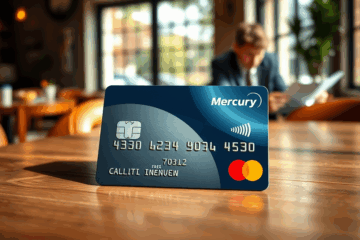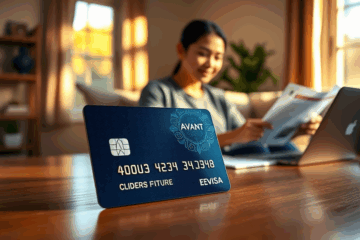Understanding How a Credit Card Works Completely
Credit Card usage is an integral part of modern financial practices, offering consumers the flexibility to make purchases without immediate cash.
This article will explore the intricacies of credit cards, including understanding credit limits, how purchases are processed, the significance of billing cycles, the importance of avoiding interest charges, and the impact of carrying a balance.
Additionally, we will discuss monthly statements and payments, emphasizing the need for responsible credit card management to reap the benefits while avoiding potential pitfalls.
Credit Card Fundamentals
A credit card is a financial tool provided by banks or financial institutions, allowing users to make purchases by borrowing funds.
Unlike debit cards that draw directly from a bank account, credit cards offer a line of credit that is continuously available subject to a credit limit.
This means you can spend up to the amount approved by the card issuer without having immediate cash on hand.
When you use a credit card, the issuer temporarily covers the cost of your transactions and, in return, you commit to repaying this borrowed amount by the end of your billing cycle.
Effectively managing these payments allows you to avoid interest charges and fees, enhancing the card’s utility in daily financial management.
Moreover, by paying off what you owe in full by the due date, you maintain access to the credit limit that supports future purchases.
One of the key advantages of credit cards is their revolving balance feature which allows continuous borrowing within imposed limits as long as previous balances are paid down.
As you repay what you’ve borrowed, your available credit increases, which makes this tool both flexible and convenient for regular expenses or larger purchases.
This revolving nature distinguishes credit cards from traditional loans, presenting an effective way to manage consumer spending provided repayments are made responsibly.
While credit cards offer benefits such as rewards, cash back, and fraud protection, it is crucial to spend within your means.
Understanding that carrying a balance beyond the due date can result in interest accumulation helps maintain financial health.
Resources like Investopedia on Credit Cards provide more insight into their functionality.
It’s essential for consumers to balance the accessibility of credit with the discipline of timely repayment.
Applying for a Card
Consumers seeking to apply for a credit card can initiate the process in multiple ways, including online platforms, branch visits, or through mail.
Every method ensures that the application is evaluated based on strict parameters to determine creditworthiness.
The underlining process remains consistent as lenders scrutinize detailed personal and financial history.
They analyze factors like credit score, repayment history, and income sources to evaluate the applicant’s ability to manage credit effectively.
This holistic evaluation helps issuers decide on whether to extend credit and what limits to impose.
Once an application is submitted, credit card issuers engage in a comprehensive risk analysis.
This analysis involves assessing financial documents and the applicant’s debt-to-income ratio to set an appropriate initial credit limit.
Investopedia’s guide on credit limits explains that factors like credit history length and the number of existing accounts are crucial in this risk assessment.
The final approval results in immediate or eventual receipt of the card, allowing controlled use within the assigned credit limit.
- Credit score and history review
- Income verification
- Debt-to-income ratio
- Employment details
Making Purchases and Authorizations
When you make a purchase with a credit card, the process commences with the card being swiped or tapped, initiating a real-time authorization request.
The merchant submits information to the acquiring bank, which forwards it to the payment network, connecting with the issuing bank.
This communication determines if the purchase is approved or declined based on factors such as available credit and fraud detection efforts.
Once approved, a temporary hold appears on your account, reflecting the purchase amount and ensuring the funds are available.
After approval, the information flows through the payment networks, facilitating the communication between the acquirer and the issuer.
This intricate connection ensures both security and efficiency in transaction processing.
As the transaction continues, the temporary hold remains until conclusion when the charge is officially settled.
The settlement phase occurs when the funds are transferred from the issuing bank to the merchant bank, finalizing the transaction.
Shortly thereafter, the merchant’s batch of transactions gets processed, transitioning from authorization to settlement.
According to Stripe, the transaction is cleared and posted to your account, removing the temporary hold and reflecting the settled charge.
This seamless sequence—from authorization to settlement—enables individuals to make secure and convenient purchases effortlessly, highlighting the importance of robust communication across the financial infrastructure.
Understanding the Billing Cycle
A billing cycle is the time span between two consecutive account statements, typically lasting between 28 and 31 days, as outlined by Capital One.
During this period, all purchases, payments, and any interest or fees are recorded.
The cycle’s conclusion leads to the creation of a billing statement, detailing these transactions.
Understanding the cycle’s closing date is crucial, as it affects how you plan your payments to avoid penalties.
Statements are generated soon after the cycle ends, and eventually, the statement is delivered to you for review.
Upon receiving the billing statement, you can see specific sections noting your total purchases, any payments made, and applicable fees and interest.
Knowing your due date is essential to avoid additional financial liabilities.
You must also note the minimum payment amount, which is the least you can pay each cycle to maintain your account in good standing.
Proper management ensures you stay informed about your financial responsibilities and helps in planning your budget efficiently.
Here is an example of a statement layout with key components formatted:
| Date | Purchases | Payments | Fees | Interest |
|---|---|---|---|---|
| 2023-10-01 | $150 | $50 | $5 | $10 |
Payment Timing and the Grace Period
To avoid finance charges on your credit card, it is essential to understand the significance of your payment deadline and the grace period.
Payments must be received by the due date to ensure they are on time and to avert any potential late fees or interest charges.
An interest-free period, commonly known as a grace period, is typically around 21 days from the end of your billing cycle.
During this period, if you pay your full balance, you can avoid accruing interest on your purchases.
Utilizing this period effectively allows you to manage your finances better and avoid unnecessary costs.
Learn more from Investopedia’s guide on grace periods.
However, if you only make the minimum payment, you will not benefit from the interest-free period and will incur interest on your unpaid balance.
This path can increase your debt significantly, so paying off your balance in full whenever possible is crucial.
This practice not only helps maintain your credit score but also allows you to benefit fully from the convenience a credit card offers.
To gain more insights, refer to this informative article from NerdWallet on effectively using grace periods to your advantage.
Costs of Carrying a Balance
Carrying a balance on your credit card often leads to financial challenges due to the compound interest effect.
Compound interest, calculated daily and applied to any unpaid balance, significantly increases the total amount owed over time.
Imagine each day’s interest calculated on both the initial principal and accumulated interest.
As each day passes, the interest charges add to the existing debt, causing even small balances to swell quickly.
The cycle perpetuates a continuous increase in interest owed, making it critical to manage outstanding balances effectively to prevent them from ballooning unexpectedly.
The impact of high balances extends beyond just increasing debt.
The credit utilization ratio plays a crucial role in credit health, reflecting the percentage of available credit used at any time.
A high utilization ratio can lower your credit scores substantially, restricting access to favorable loan terms in the future.
As revolving debt grows, the available credit diminishes, driving up the utilization ratio.
This elevated ratio signals potential risk to lenders, who might respond by hiking interest rates or tightening credit limits, exacerbating financial strain and amplifying the challenges of managing debt effectively.
Consider reading [this helpful guide from Capital One on carrying credit card balances](https://www.capitalone.com/learn-grow/money-management/carrying-credit-card-balance/) for more insights on effectively managing your credit utilization.
Practical Tips for Card Management
Developing disciplined habits is crucial for responsible credit card management.
Consistently following best practices allows you to maintain good credit and avoid unnecessary fees.
Staying within your credit limits and monitoring your statements can help you make the most of your credit benefits without the risk of falling into debt.
Embrace a proactive approach, ensuring that reward programs serve you rather than lead to careless spending.
For actionable practices, consider these tips:
- payment on time
- Monitor credit card statements using tools like Capital One’s resources
- Stick to a budget to avoid overspending
- keep credit utilization low
- Leverage rewards responsibly by using them for essential expenses
Incorporating these practices into your financial routine can ensure sustainable credit card usage and financial health.
Credit Card ownership can enhance financial convenience, but it necessitates careful management.
By understanding the fundamental aspects discussed in this article, consumers can utilize credit cards effectively while minimizing debt and maximizing their financial well-being.



0 Comments